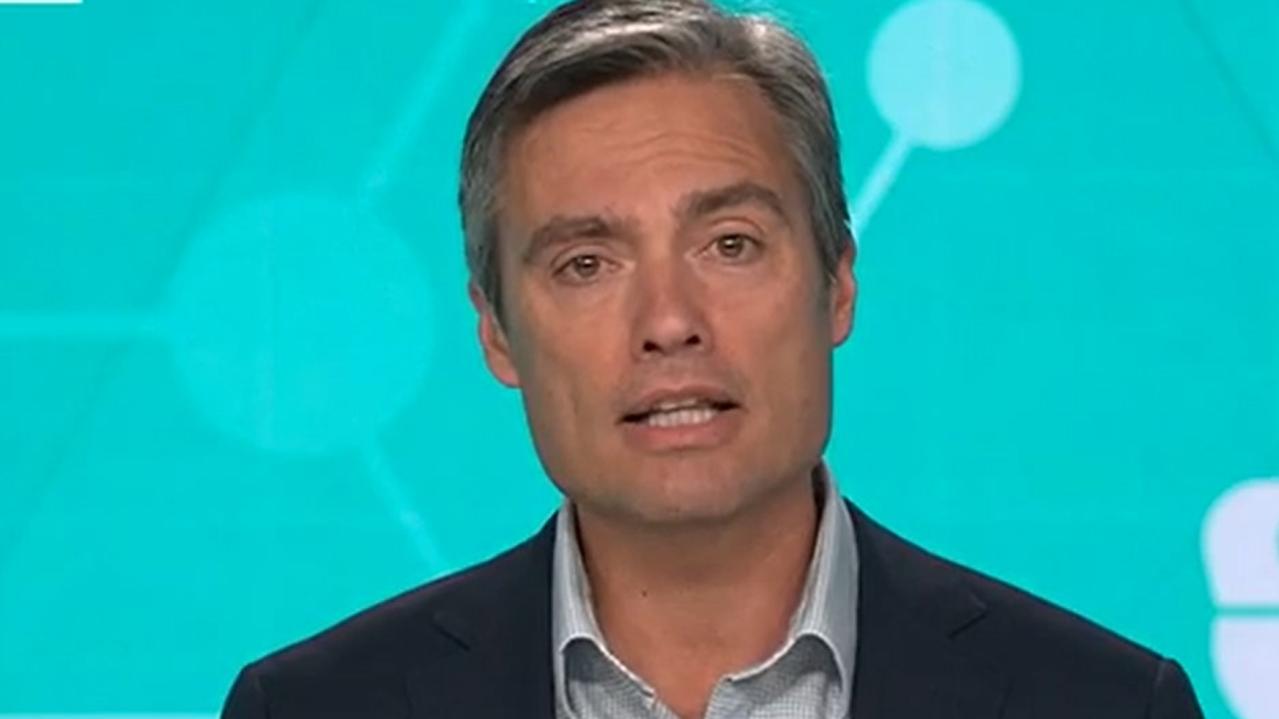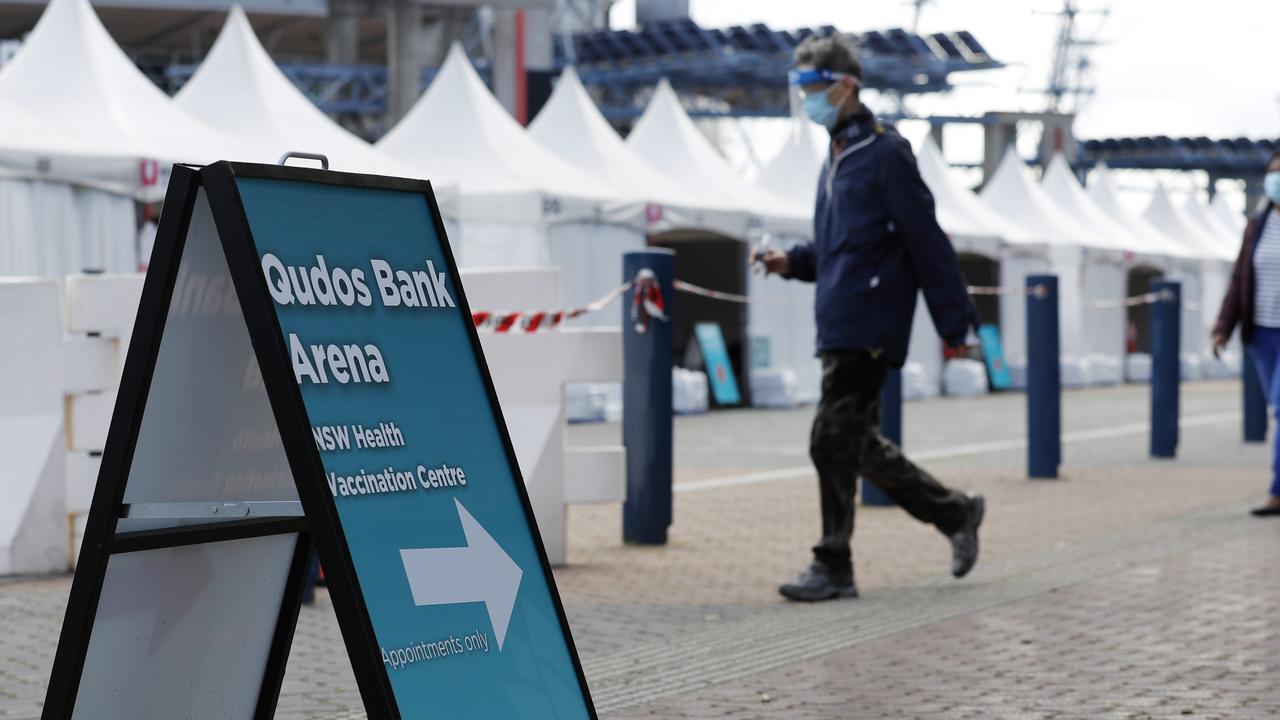Modelling shows NSW lockdown may take five weeks to work
New modelling has revealed how long NSW may need to be in lockdown for in order to get Covid-19 cases down to five a day.
New modelling suggests it could take around five weeks for Greater Sydney’s Covid-19 numbers to get down to an average of five cases a day or fewer.
Melbourne University experts including epidemiologist Professor Tony Blakely have developed the modelling, which shows the restrictions announced on Saturday including a halt on construction work — equivalent to a stage four lockdown — would get cases down to an average of five or less with 5.8 weeks, although it could be as short as 4.6 weeks or as long as 7.5 weeks.
The modelling also showed it would have taken about 8.3 weeks to get cases down with only the “soft lockdown”, equivalent to stage three restrictions.
If NSW had remained at stage two restrictions, equivalent to the minimal restrictions in place early in the outbreak, Prof Blakely said the outlook would have been “very uncertain” as it could have been as short as six weeks if the state was lucky or 27 weeks (almost eight months) if it was unlucky.
“The Delta variant has been a game changer,” Prof Blakely said.
“It is harder to control and eliminate, and makes policies other than hard lock down very uncertain and hard to predict.”
He said going into hard lockdown meant it would take less time to get rid of the virus, and there would be more certainty around how long it would take to get cases down.
Graphs developed as part of the modelling show the results of 10,000 runs of each scenario, much like mapping the results of a time machine over and over again to capture the randomness of how Covid-19 behaves.
RELATED: Half of Australia’s population is in lockdown
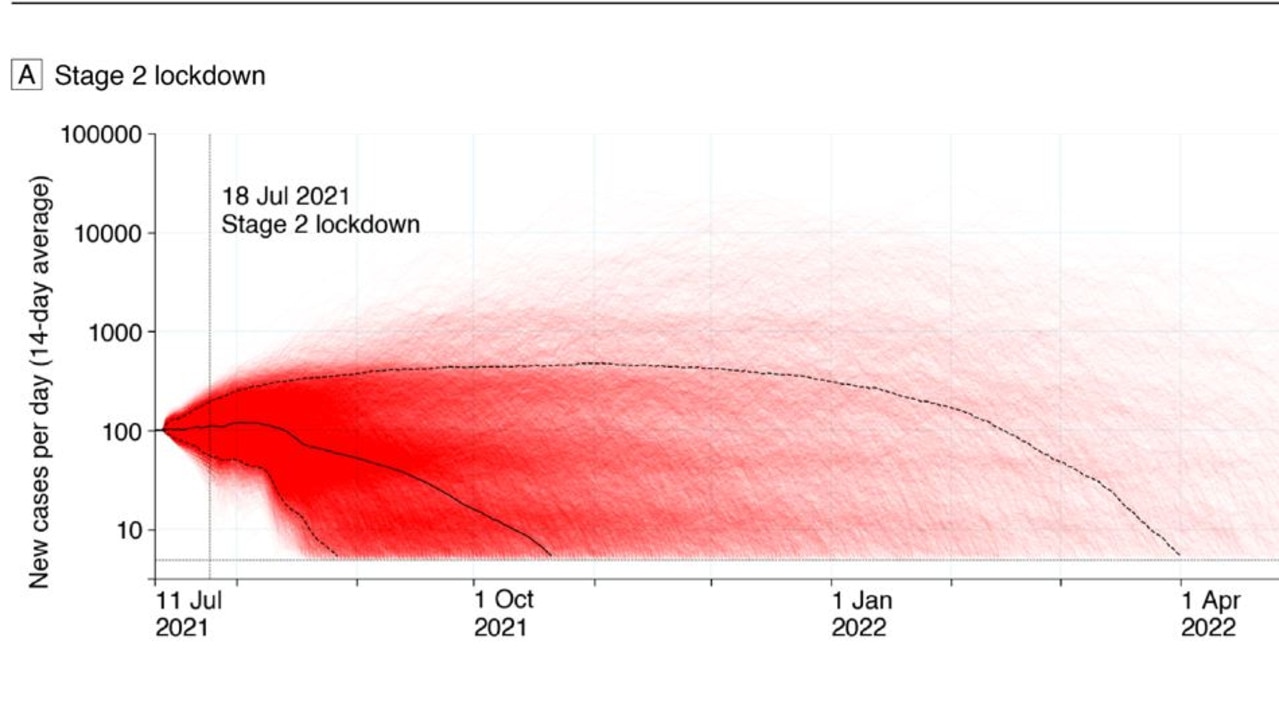
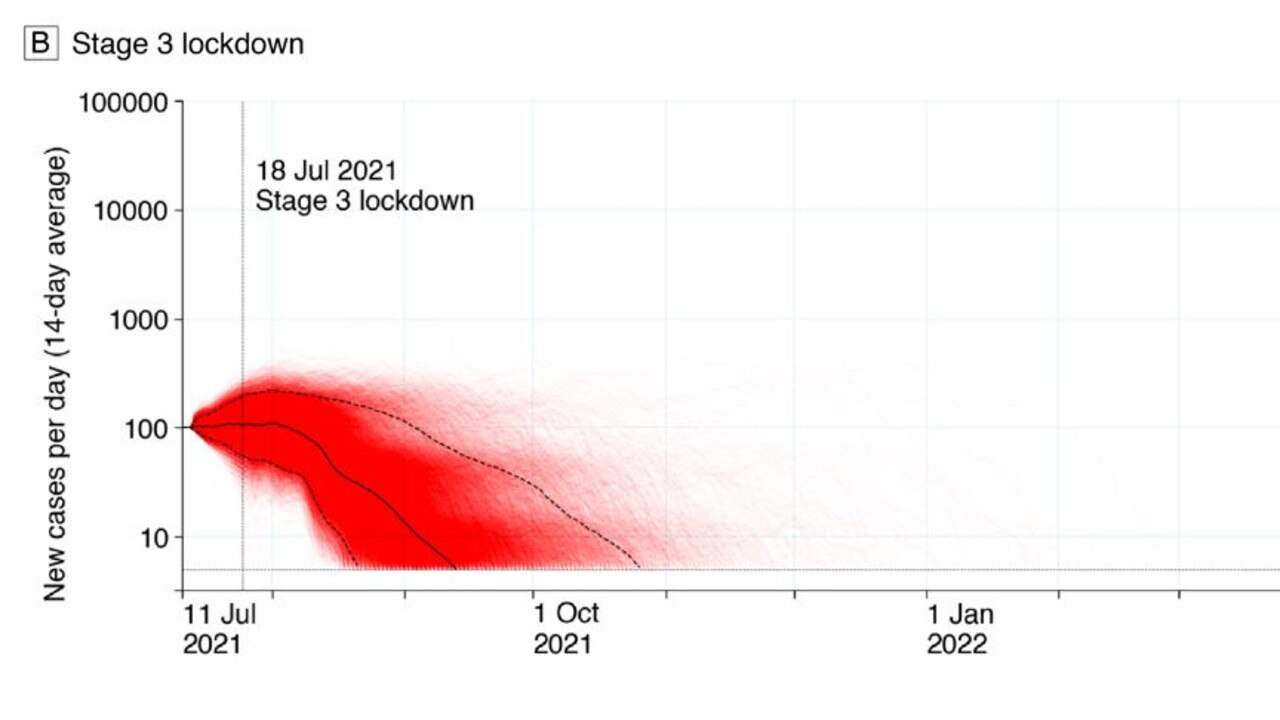
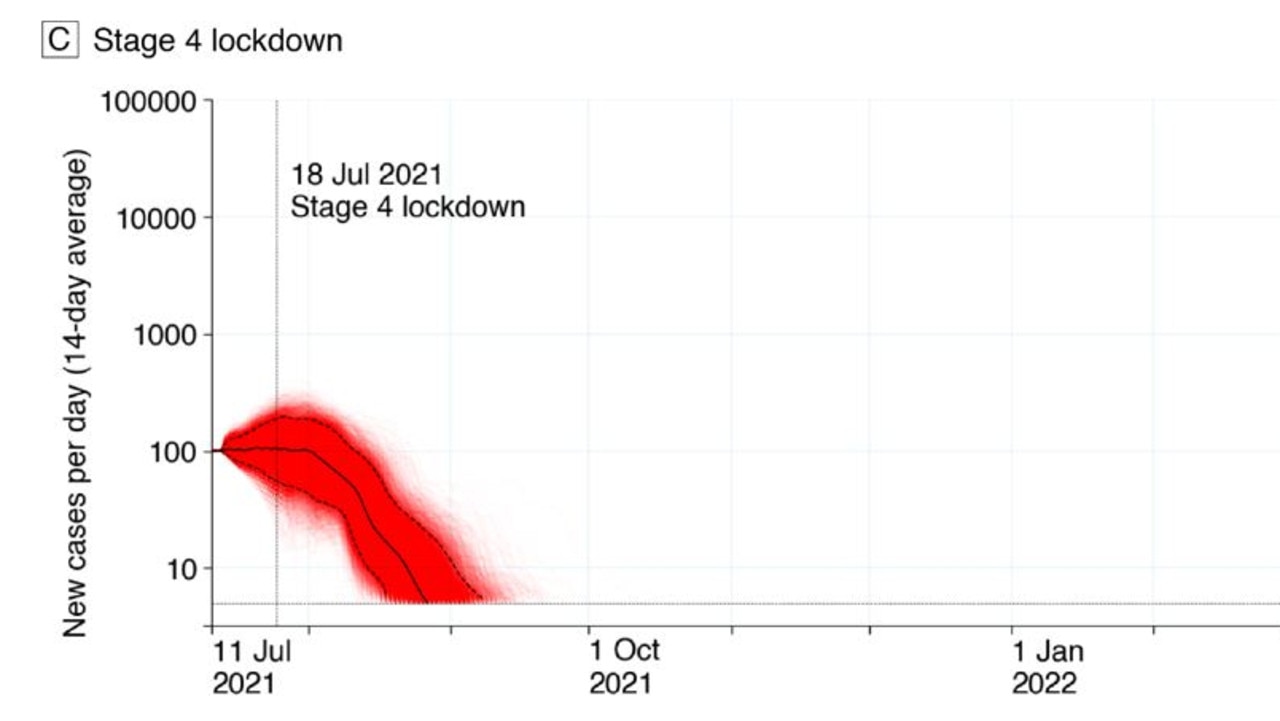
The modelling aligns with other predictions including from Burnet Institute epidemiologist Professor Michael Toole, who estimated it could take until the end of August for Sydney’s lockdown to lift.
He said it took six weeks for Victoria to get its Covid-19 cases down to almost zero from around 100 during its second lockdown last year.
The predictions from Prof Blakely were developed using an updated model developed to assist the Victorian Government in 2020 during the second wave.
A target of five average daily cases was used because it was the one that helped Victoria to exit its second wave, and would hopefully mean the majority of cases would be among known contacts already in isolation.
However, NSW Premier Gladys Berejiklian has indicated the government is looking at the number of cases circulating in the community while infectious, not the daily number of cases.
This number has not budged much in the past two weeks despite tightening restrictions, and has remained around 25 a day, while daily case numbers have hovered around 90 a day.
University of South Australia epidemiologist Professor Adrian Esterman previously told news.com.au that even if NSW was not aiming to get daily cases down to zero, authorities could not lift restrictions until they were at least in the single digits.
“Other states also won’t open their borders unless cases are in single digits,” he said.
charis.chang@news.com.au | @charischang2



